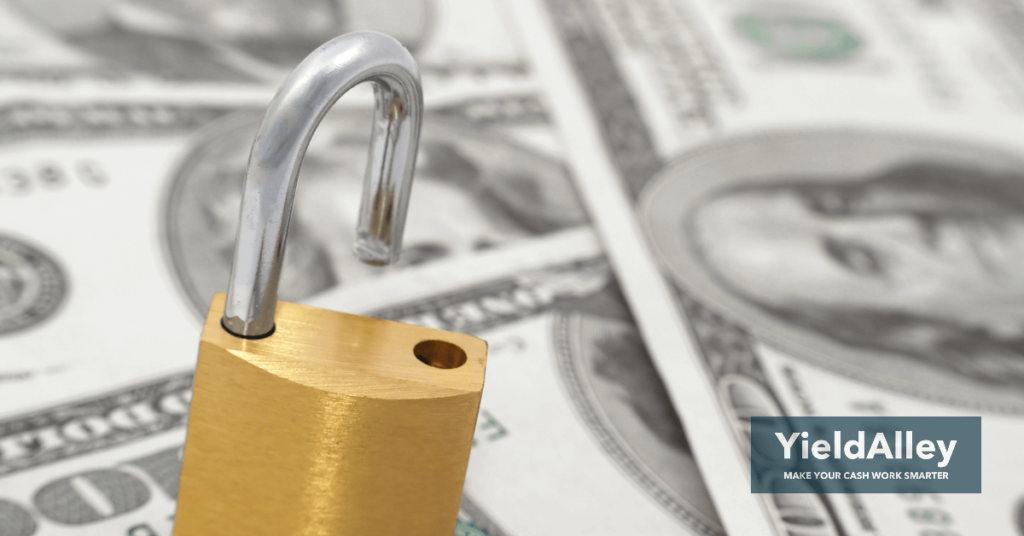Imagine you’re lending money to a friend, charging that friend interest, and you agree on a specific date when they’ll pay you back. Now, what if you knew for sure that your friend couldn’t pay you back earlier than the agreed date, even if they wanted to so they could pay you less interest? That’s essentially what a call-protected or non-callable certificate of deposit (CD) is.
What Is a Call-Protected CD?
A call-protected CD is a CD that the issuing bank cannot redeem or “call back” before maturity. You are guaranteed to earn interest for the full term if you hold the CD to maturity.
Typically, this label is most often applied to brokered CDs, which are classified as either being call-protected or not. Call-protected brokered CDs may pay lower rates than callable CDs to compensate for the additional risk that the bank can terminate the CDs, but this isn’t always the case. We have seen many instances of call-protected CDs paying more than non-protected CDs.
What Is a Callable CD?
A callable CD is a CD that the issuing bank can terminate or “call back” before its maturity date. This presents a degree of uncertainty that you won’t experience with a call-protected CD. The banks will often back a CD when interest rates decrease, so they can reissue the CD at a lower rate.
The Rationale Behind Banks Issuing Callable CDs
Banks will issue callable CDs as a strategic move to protect themselves against falling interest rates.
If interest rates drop, the bank can call back or terminate a callable CD. This means the principal will return to the investor, and the bank may choose to reissue the CD at the current lower rates. This allows the bank to manage its exposure to interest rate risk and potentially increase its profitability.
Frequency of Callable CDs Being Called
The frequency with which callable CDs are called depends on the movement of interest rates.
If interest rates significantly decrease, it becomes more likely that the bank will call the CD.
However, if interest rates rise or remain stable, the bank will likely let the CD mature until its maturity date.
FDIC Insurance for Call Protected and Callable CDs
Both callable and call-protected CDs are insured by the Federal Deposit Insurance Corporation (FDIC). This insurance covers up to $250,000 per depositor, per insured bank, for each account ownership category. This means that even if the issuing bank were to fail, the principal and accrued interest of the CD are still protected up to the insurance limit.
The Appeal of Call-Protected CDs
The primary appeal of call-protected CDs lies in their predictability. Because these CDs cannot be called before their maturity date, investors can count on receiving a fixed rate of return for the entire term of the CD. This can be particularly advantageous in a declining interest rate environment, as the investor is guaranteed a certain return regardless of changes in market rates.
The Risks and Rewards of Callable CDs
Callable CDs, on the other hand, come with a different set of risks and rewards. While these CDs typically offer higher interest rates to compensate for the call risk, they also introduce greater uncertainty.
If market rates fall, the bank may call the CD and return the principal to the investor who must find a new investment opportunity in a lower-rate environment.
However, if market rates rise or remain stable, the bank is unlikely to call the CD, allowing the investor to continue earning a higher rate of return. Additionally, like non-callable CDs, callable CDs are also FDIC-insured, providing a safety net for the invested principal.
Are Brokered CDs Callable or Call-Protected?
Brokered CDs can be call-protected, and we have seen many instances where call-protected brokered CDs pay more than callable ones.
You should always double-check an individual brokered CD’s details to ensure it’s call-protected.
How to Choose a Call-Protected CD vs. Callable CD
In conclusion, both callable and non-callable CDs have their unique advantages and potential drawbacks. Callable CDs generally offer higher interest rates but introduce the risk of being called before maturity. Non-callable CDs, on the other hand, provide rate certainty but may offer lower returns.
As with any investment decision, it’s crucial to understand the terms and conditions of the CD before investing. Consider how the CD fits into your overall financial plan, your risk tolerance, and your financial goals. You may also want to diversify your CD portfolio to spread risk and potentially increase returns.






